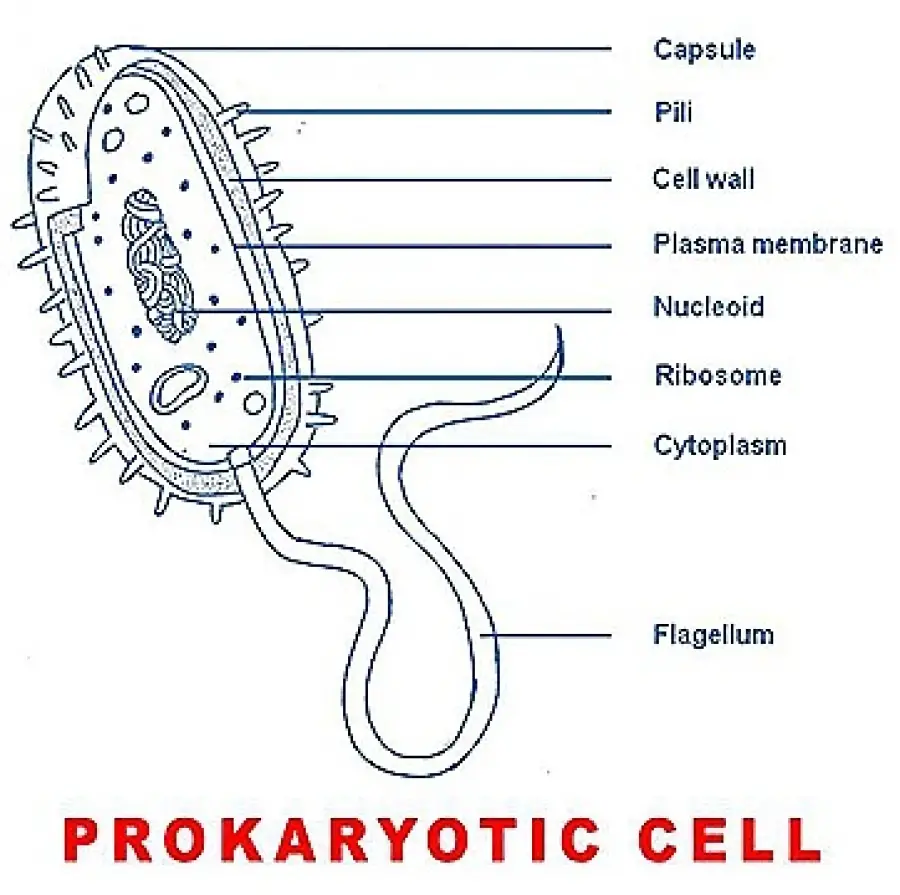In the following sections, we’ll walk through the structure of a prokaryotic cell, starting on the outside and moving towards the inside of the cell. Unit 2 water, acids, and bases. Web identify the three most common shapes of prokaryotic cells. Unit 7 more about cells. Web unit 1 intro to biology.
Unit 5 energy and enzymes. The photosynthetic prokaryotes include cyanobacteria that perform photosynthesis. The figure below shows the sizes of prokaryotic, bacterial, and eukaryotic, plant and animal, cells as well as other molecules and organisms on a logarithmic. Organisms within the domains bacteria and archaea are based on the prokaryotic cell, while all other forms of life are eukaryotic. Unit 4 elements of life.
All prokaryotes have chromosomal dna localized in a nucleoid, ribosomes, a cell membrane, and a cell wall. The word prokaryote comes from the ancient greek πρό ( pró) 'before' and κάρυον ( káruon) 'nut, kernel'. Web identify the three most common shapes of prokaryotic cells. Describe a typical prokaryotic cell. These cells are structurally simpler and smaller than their eukaryotic counterparts, the cells that make up fungi, plants, and animals.
The photosynthetic prokaryotes include cyanobacteria that perform photosynthesis. Learn its structure, with diagram, facts, characteristics, parts, functions, & cell division. The composition of the cell wall differs significantly between the domains bacteria and archaea, the two. All cells have a plasma membrane, ribosomes, cytoplasm, and dna. The word prokaryote comes from the ancient greek πρό ( pró) 'before' and κάρυον ( káruon) 'nut, kernel'. Web prokaryotic cell diagram drawing easy and step by step / how to draw and label prokaryotic cell in this video, i will learn how to draw and label a prokaryot. What is a prokaryotic cell? Web i draw a bacterial cell to show you how to make an accurate biological drawing of a prokaryotic cell. These neat, well labelled and colorful diagrams will make your answers look more. Web distinguish between prokaryotic cells and eukaryotic cells in terms of structure, size, and the types of organisms that have these cell types. Unit 4 elements of life. A darkened region called the nucleoid (figure 2). The figure below shows the sizes of prokaryotic, bacterial, and eukaryotic, plant and animal, cells as well as other molecules and organisms on a logarithmic. What are the key features of eukaryotic cells? Diagram of a typical prokaryotic cell.
As I Go, I Give Tips On Drawing The Various Structures And How To Label Them.
Describe a typical prokaryotic cell. Unit 7 more about cells. Web unit 1 intro to biology. Some prokaryotes have flagella, pili, or.
What Are The Roles Of Flagella And Endospores In Prokaryotes?
Organisms within the domains bacteria and archaea are based on the prokaryotic cell, while all other forms of life are eukaryotic. Unit 9 more about membranes. Web the nucleus (plural, nuclei) houses the cell’s genetic material, or dna, and is also the site of synthesis for ribosomes, the cellular machines that assemble proteins. Web typical prokaryotic cells range from 0.1 to 5.0 micrometers (μm) in diameter and are significantly smaller than eukaryotic cells, which usually have diameters ranging from 10 to 100 μm.
The Plasma Membrane, Or Cell Membrane, Is The Phospholipid Layer That Surrounds The Cell And Protects It From The Outside Environment.
Prokaryotic dna is found in the central part of the cell: Prokaryotes include bacteria and archaea. These cells are structurally simpler and smaller than their eukaryotic counterparts, the cells that make up fungi, plants, and animals. The features of a typical prokaryotic cell are shown.
Unit 2 Water, Acids, And Bases.
General science, 7th standard text book. Unit 6 structure of a cell. The composition of the cell wall differs significantly between the domains bacteria and archaea, the two. The photosynthetic prokaryotes include cyanobacteria that perform photosynthesis.


:max_bytes(150000):strip_icc()/bacteria_cell_drawing-5786db0a5f9b5831b54f017c.jpg)






